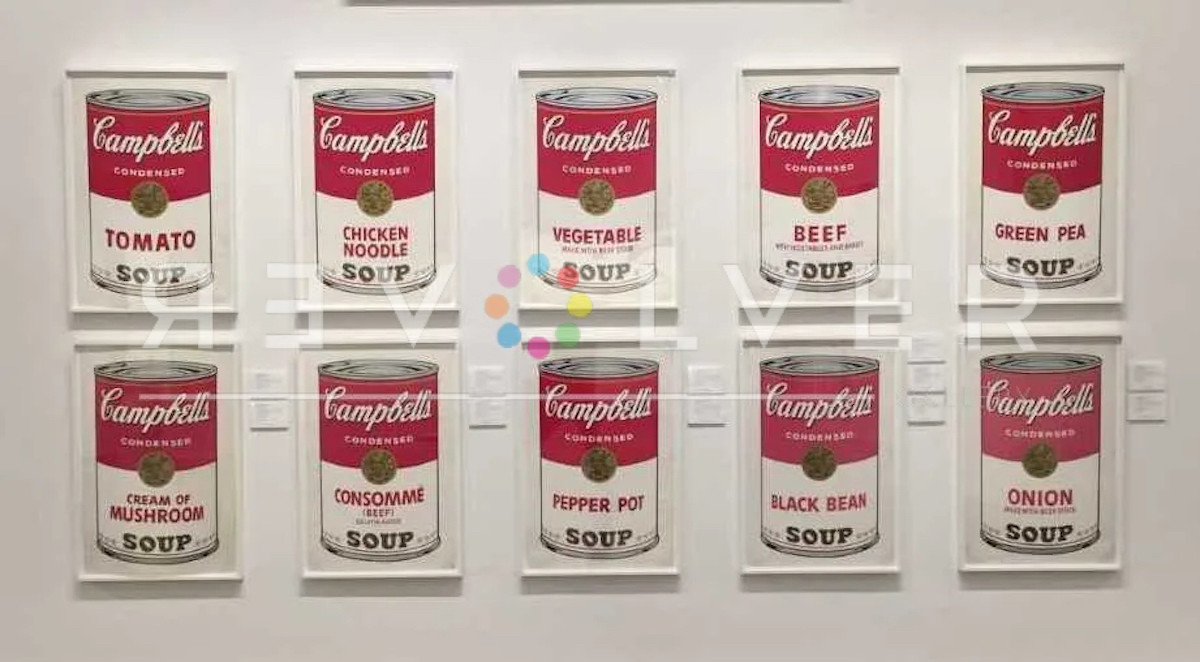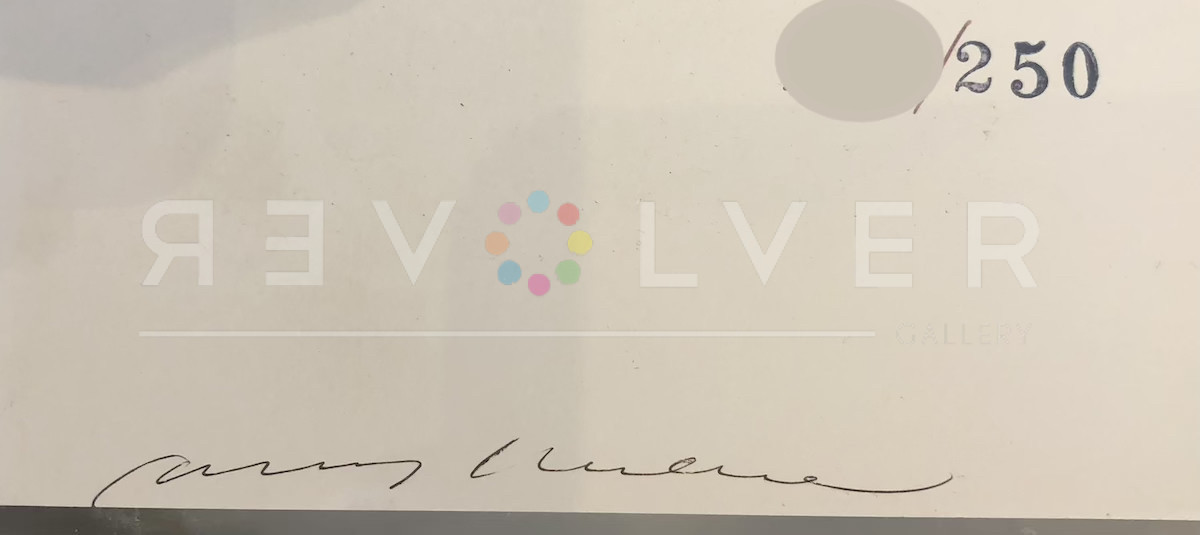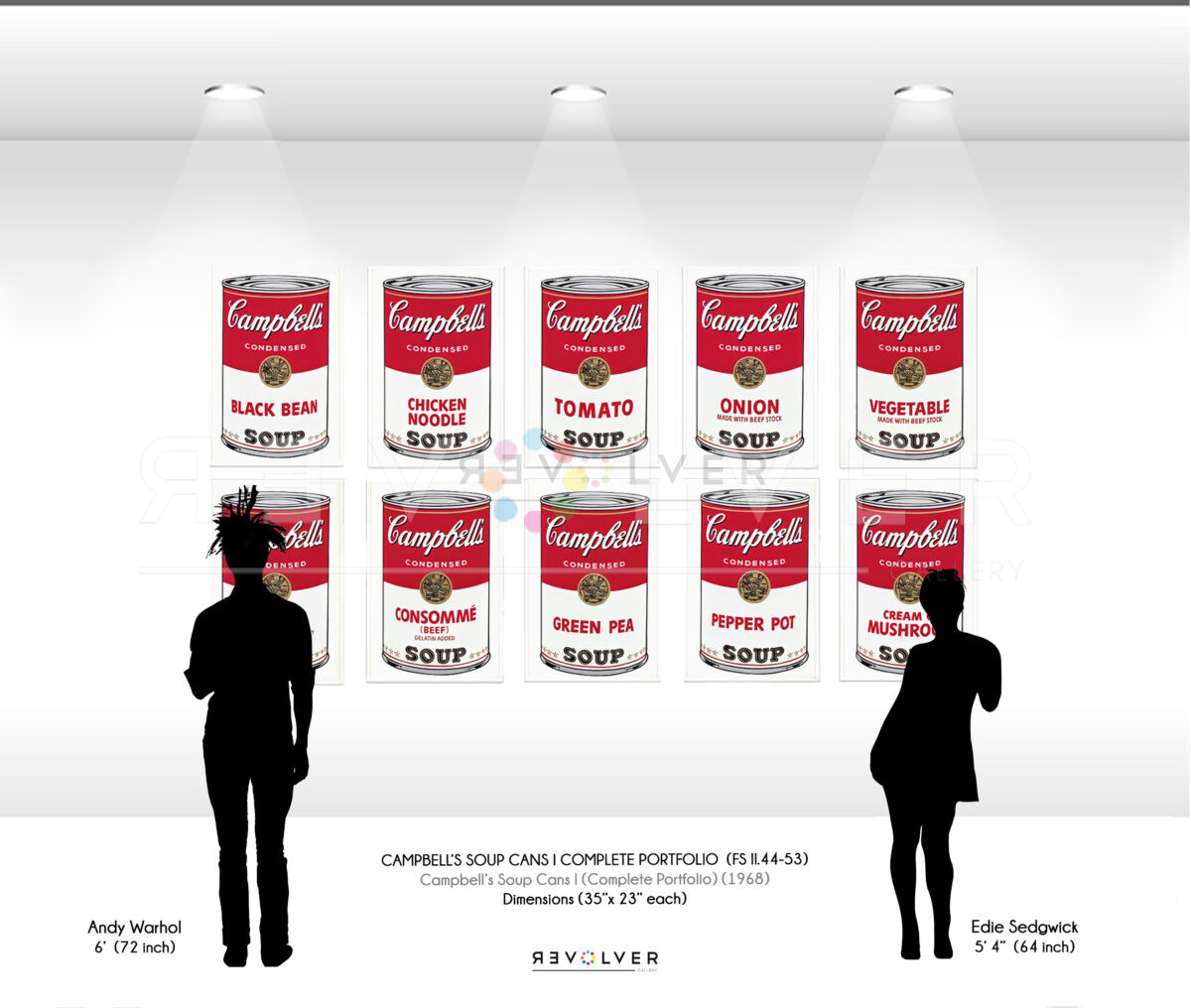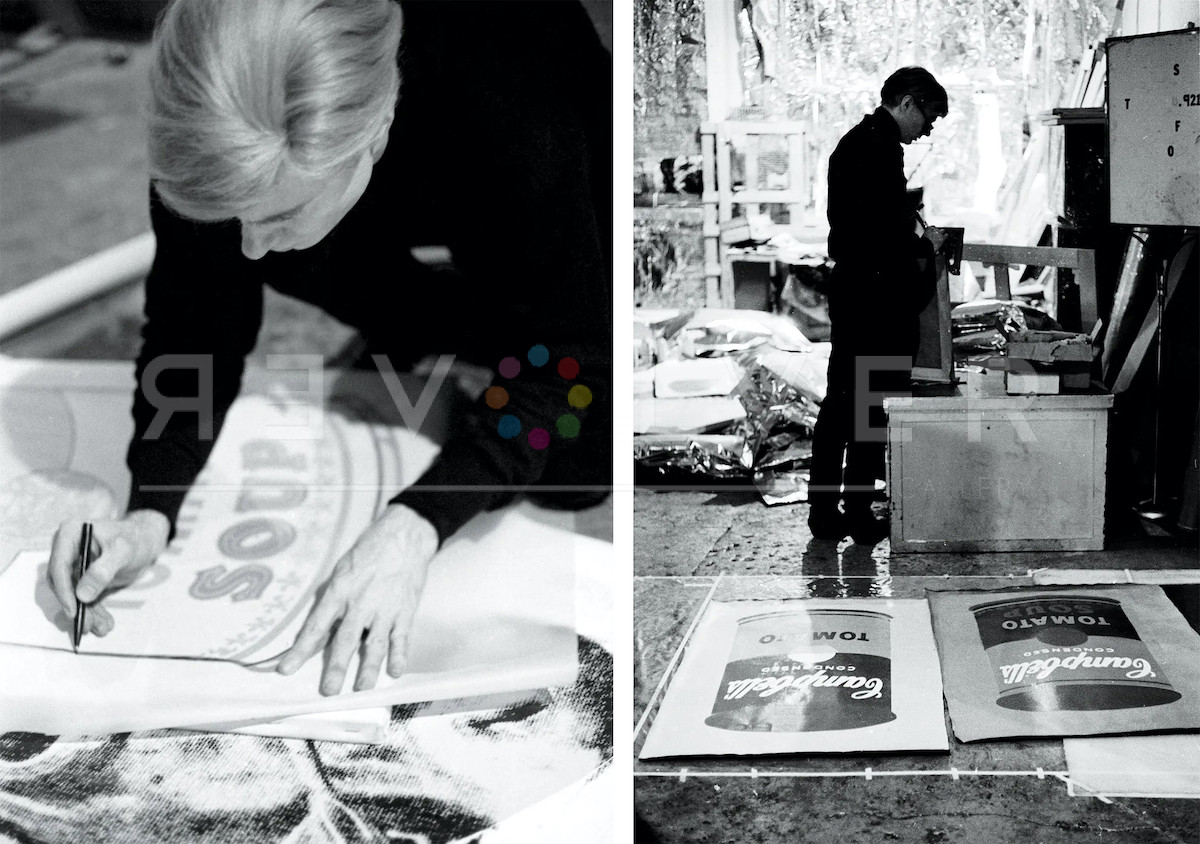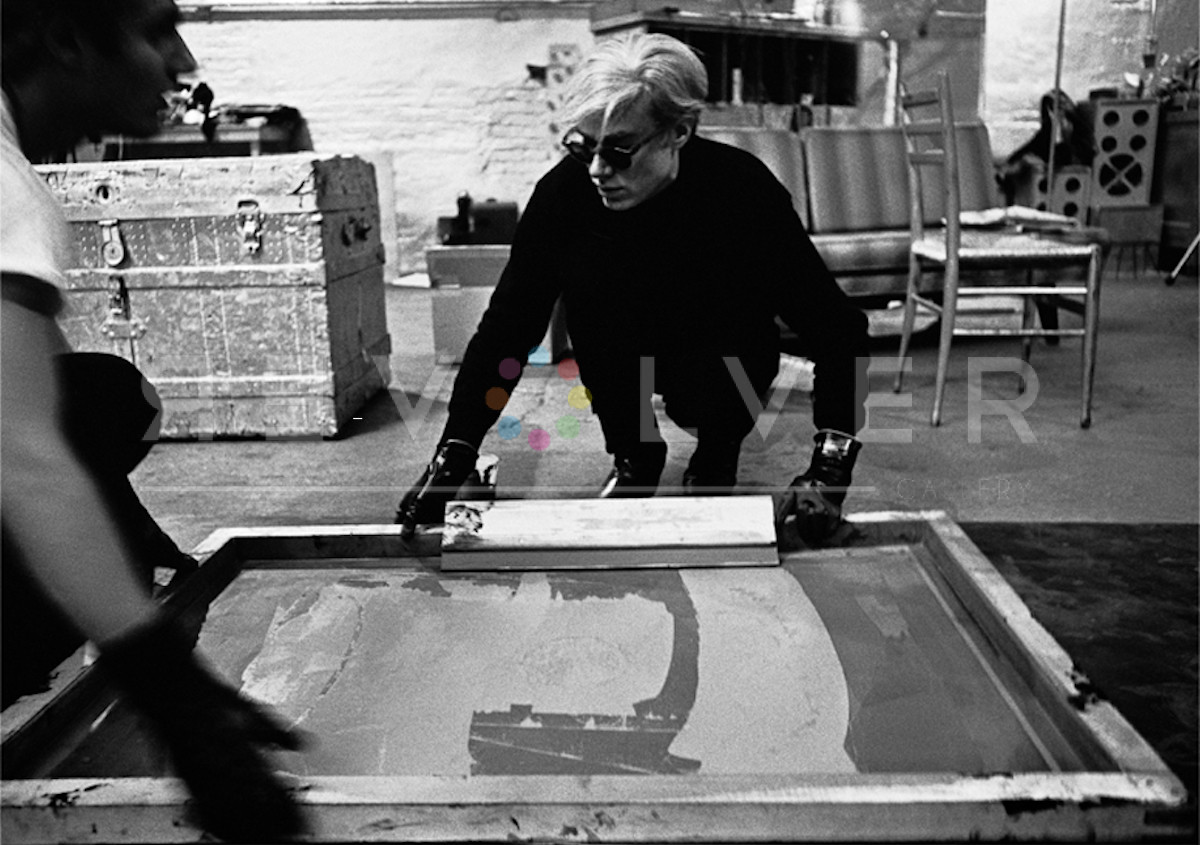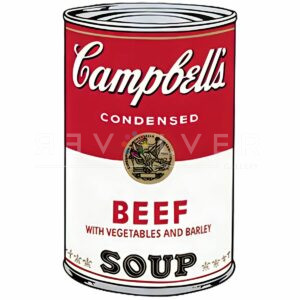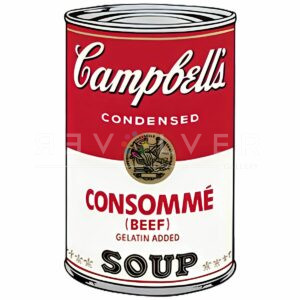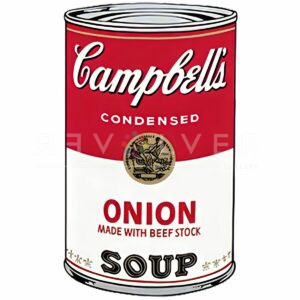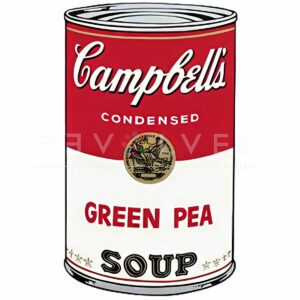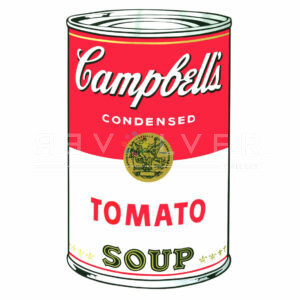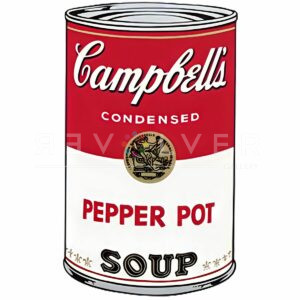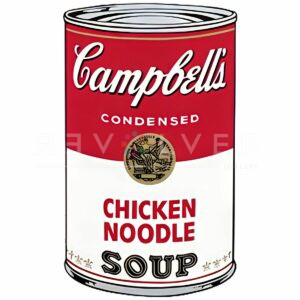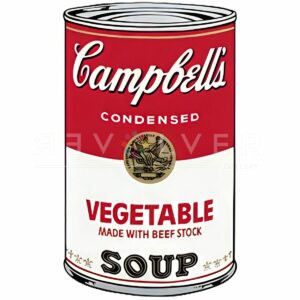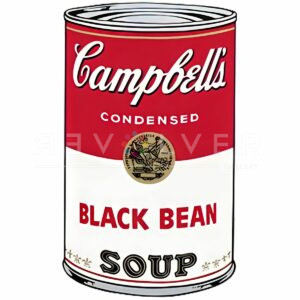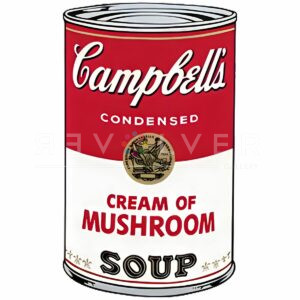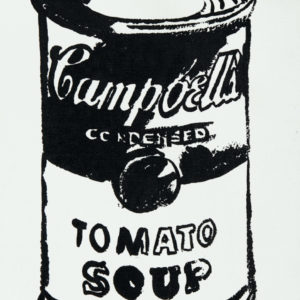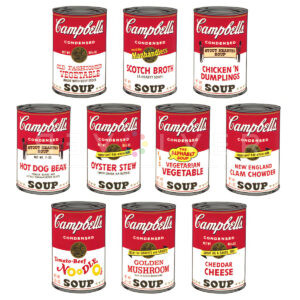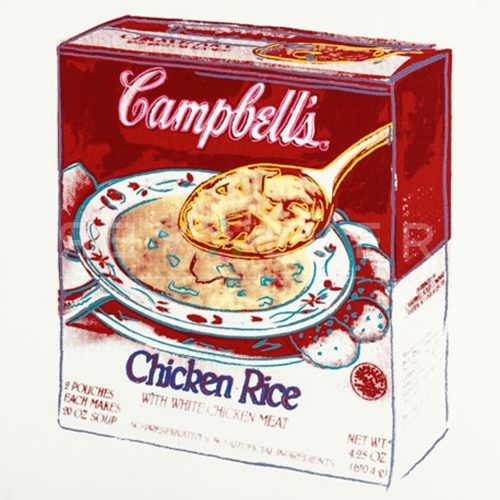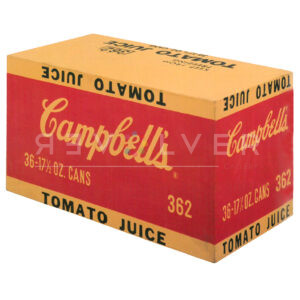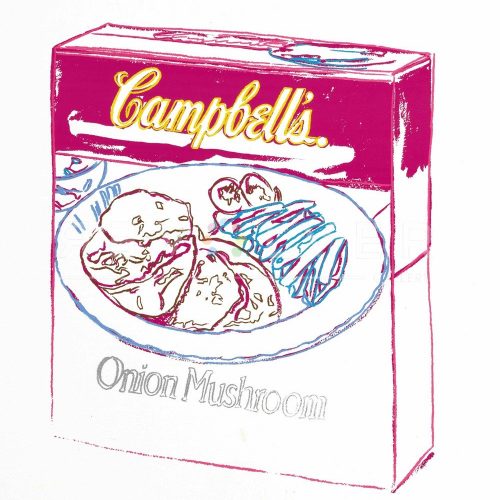The Campbell’s Soup Cans I complete portfolio by Andy Warhol consists of ten prints of Campbell’s Soup cans from 1968. It is one of the artist’s most famous and controversial series, which helped him champion the Pop Art movement. It is Warhol’s second series Campbell’s Soup Can prints, debuting six years after his original 32 Campbell’s Soup Cans paintings and followed by the Campbell’s Soup Cans II portfolio from 1969. The thirty-two canvases that make up the original Campbell’s Soup Cans series include hand-painted illustrations of thirty-two different flavors of Campbell’s soup. The star of Warhol’s first solo gallery exhibition in 1962, the original Campbell’s Soup Cans series is one of his earliest, most compelling works.
Andy Warhol’s Campbell’s Soup Cans I complete portfolio mixes his signature mass-production techniques with individualized details, such as hand-lettering on the labels. This detail juxtaposes the pains Warhol took when mimicking the uniformity and repetition of advertisements. For example, Warhol used a combination of projection and tracing to reduce differences between his paintings of the cans. For the Fleur de Lys pattern on the bottom of each can, he created a stamp in order to avoid hand-painting each symbol.
The Campbell’s Soup Cans I complete portfolio further mechanizes Warhol’s art by turning his paintings into uniform screenprints. The suite is one of the first portfolios in which Warhol used screenprinting, and one of the first publications by Factory Additions, a company Warhol developed to distribute his prints. The portfolio includes ten different Campbell’s Soup cans. Each print features one of the thirty-two flavors included in the initial series. Some of the flavors include Black Bean 44, Chicken Noodle 45, Tomato 46, and Cream of Mushroom 53. Campbell’s Soup Cans II followed Campbell’s Soup Cans I in 1969, and contains ten additional screenprints of canvases from the original Campbell’s Soup Cans series with additional illustrations. Campbell’s Soup Cans I features some of the most widely recognized prints from the entire collection.
Warhol’s fascination with the Campbell’s soup can as an object of commercialization continued long past these series. He revisited the theme at many points in his career, changing color palettes and manipulating images. The Campbell’s Soup Cans I complete portfolio, however, marks the beginning of Warhol’s use of this theme and one of the first instances of Warhol’s use of what is now considered his signature medium.
Warhol’s Campbell’s Soup Cans I complete portfolio reflects the monotony and repetitive characteristics of advertising, examining everyday objects as fine art. Of his decision to depict soup cans, Warhol said, “I used to drink it. I used to have the same lunch every day, for 20 years, I guess, the same thing over and over again.” In the Campbell’s Soup Cans I complete portfolio, Warhol turns his daily meal into an iconic work of art. Moreover, he engages with the mass production techniques that are so ingrained in our lives, truly fulfilling his wish of becoming “a machine.”
Campbell’s Soup Cans I Complete Portfolio as Part of Andy Warhol’s Larger Body of Work
One of Warhol’s most iconic portfolios, Campbell’s Soup Cans I, is recognizable by even beginner Warhol enthusiasts. It was with these soup cans that Warhol started to become a household name. When Warhol first showed the soup cans in California they created quite a stir. Even though Warhol is mostly connected to New York, he had an impact and connection with the art and artists in California in the early 60s. The semi-mechanized process he used to create these works became a key characteristic of Warhol’s art. He continued to play with the imagery of the soup can by contorting and altering them. However, it is the classic, simple version that continues to be the most popular and bring in new collectors. Warhol’s Campbell’s Soup Cans I complete portfolio helped to usher in the Pop Art movement that endures today, renewed and rediscovered by artists such as Damien Hirst and Jeff Koons.
Photo Credits:
- Andy Warhol tracing Campbell’s Soup silkscreen, The Factory, New York City, circa 1965 © Estate of Nat Finkelstein © 2021 The Andy Warhol Foundation for the Visual Arts, Inc. / Licensed by DACS, London
- Andy Warhol and Gerard Malanga make a painting, 1964
Vintage gelatin silver print, 10¼ × 14¾ inches; 26 × 38 cm. Photo by Matthew Marks. - Andy Warhol, 1964. Vintage gelatin silver print, 10¼ × 14¾ inches; 26 × 38 cm. Photo by Matthew Marks.

